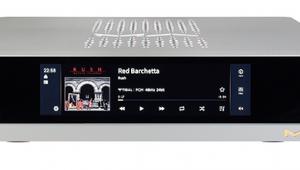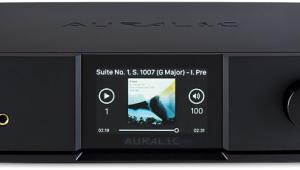Aurender N30SA Network Audio Library Ari Margolis
While our tests focused on the N30SA's asynchronous USB output – a popular choice because of its compatibility with the highest LPCM and DSD data rates – there's a school of thought that suggests the older S/PDIF interconnect standard may be preferable for lower (up to 192kHz) sample rates. Ari Margolis, Aurender's US Sales & Business Development Director, tends to agree.

'The W20SE and N30SA share the same audio board which is run by an Oven Controlled Crystal Oscillator (OCXO) clock module which ensures precise and stable control of the S/PDIF and AES/EBU outputs. USB has become the de facto standard digital audio interconnect in 2023. Why? Because computers have USB ports. They don't have OCXO clock-controlled S/PDIF outputs. If they did, no one would be using USB.'
Ari continues, 'With asynchronous USB, all digital players (including the N30SA) are slaved to the DAC's clock. So our OCXO clock doesn't come into play for USB output, but if the connected DAC has a very precise clock to govern that USB input stage, then it can achieve very low levels of jitter. However, USB is prone to transferring noise from the source to the DAC. Even with the N30SA, where our engineering team has gone to great lengths to mitigate USB noise transference, the USB output is still noisier than S/PDIF or AES/EBU.
'So S/PDIF and AES/EBU are less noisy than USB, but they are historically prone to jitter. That's why the source's clock is so important and why with Aurender's OCXO-slaved S/PDIF or AES/EBU outs, we achieve low noise and low jitter.' PM

























































